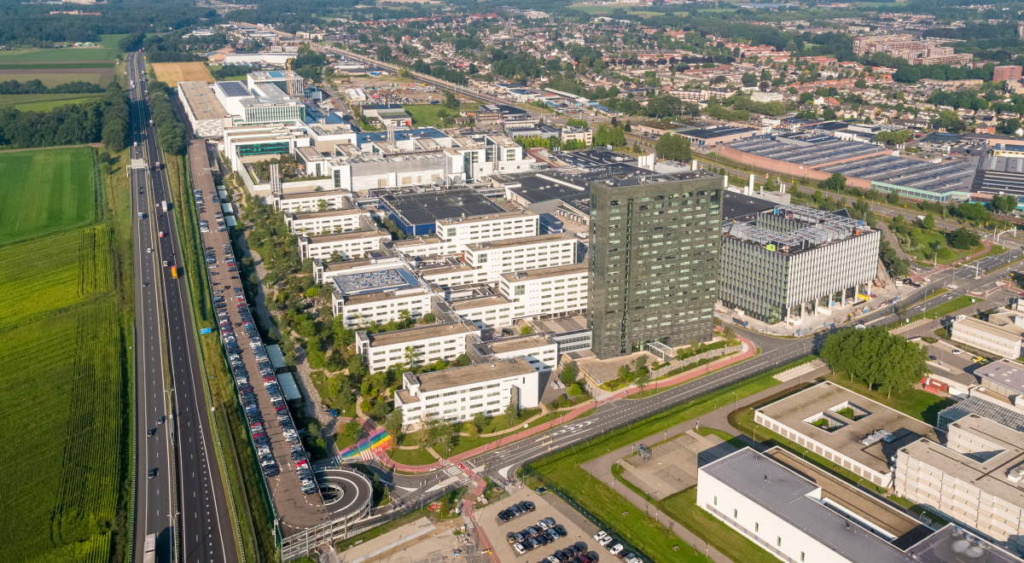Your cart is currently empty!

High-tech megaclusters
To maintain the Dutch lead in semiconductors and high-tech systems, we must show courage, make sharp choices and structurally organize collaboration, says TNO’s Rogier Verberk. According to him, the key lies in forming high-tech megaclusters: large-scale innovation hubs that unite companies, knowledge institutions and investors around selected focus technologies.
The Dutch semiconductor and high-tech industry has built an exceptionally strong international position. Companies such as ASML and NXP, together with a broad ecosystem of specialized suppliers, form an innovation engine of global significance. But that position isn’t guaranteed. Without focus, courage and a coherent long-term strategy, we risk losing out to countries that organize their innovation infrastructure in a stronger and more centralized way.
High-Tech megaclusters help maintain our lead: large-scale innovation hubs where companies, knowledge institutes, governments and investors collaborate on the technologies of the future. Such clusters aim to serve as breeding grounds and engines for a new generation of technological champions. With that knowledge and manufacturing capacity, we can remain an essential link in global value chains.
This requires more than incidental subsidies or short-term policy. We need to take a broader view of societal challenges such as grid congestion, high energy costs, attracting international talent and the nitrogen crisis. These issues hinder growth and innovation. Only through targeted policies and long-term focus can we safeguard our earning capacity.
The National Technology Strategy (NTS) has already identified ten key technologies for the Netherlands. I see that as an important step, but more is needed. Ambitions must become concrete. The Ministry of Education, Culture and Science (OCW) and the Netherlands Organization for Scientific Research (NWO) must dare to make choices – just as we at TNO must. Focus not only means choosing but also letting go of domains where we have no “right to play.” It’s better to lead in a few areas than to ride mid-pack in ten.
The semiconductor sector explicitly deserves to be labeled a national spearhead. The strategic value of semicon technology is enormous: knowledge and innovations from this sector find their way into countless other domains – from defense to space, communications and medical equipment. The Dutch government has already recognized this by committing hundreds of millions in European co-funding. However, to take the next step, structural collaboration is required.
That’s precisely the essence of TNO’s proposal for high-tech megaclusters. Instead of a fragmented landscape of separate initiatives and project-based subsidies, we should invest in an integrated network of innovation hubs with shared R&D infrastructure, testing facilities and access to capital.
We can look to successful international examples, such as Innopolis in South Korea. There, five regional innovation clusters develop new technologies, test them and scale them up with minimal bureaucracy. The South Koreans demonstrate what’s possible when focus, speed and collaboration come together.
In the Netherlands, we often speak of “congestion” in the context of our electricity grid, but I see congestion on many levels: in policymaking, decision-making and funding. The fact that applied research facilities currently have to scrape together resources from ten different funding streams slows down our innovation speed.
The relationship between government and market is also crucial. The established 3 percent innovation norm is only achievable if the government and private sector move forward together. It would greatly help if the government not only invested but also acted as a launching customer. This would achieve two goals at once: strengthening high-tech product development while ensuring that investments flow back into our economy and treasury through taxation.
To strengthen the innovation chain, we must especially address the weak links – such as the step from science to application and then the transition to industrialization. High-tech megaclusters can make the difference precisely there. They bring together companies, researchers, governments and investors – physically and organizationally – so that new technologies mature faster and can be scaled up more effectively. It’s also crucial that we dare to invest in promising startups with the potential to capture so-called control points in international value chains.
At the same time, we mustn’t lose sight of our current champions. We shouldn’t be too frugal when it comes to investing in existing top performers. Their international position is what makes our country attractive for foreign R&D investments.
Dutch high-tech has matured, but without the courage to choose and concentrate, it risks getting stuck in its own success. High-tech megaclusters form the key to a national long-term strategy – a structural engine that continuously drives renewal. Only in this way can the Netherlands maintain and expand its technological lead in a world that’s rapidly digitalizing.


